United States
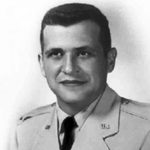
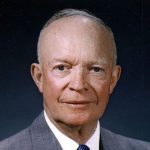 On May 1, 1960, CIA U-2 spy plane pilot, Gary Powers found himself in a lot of trouble. His plane was disabled after being hit by Soviet surface-to-air missiles. Powers had to let his plane fall from 70,000 feet to 30,000 feet before he could release himself and bail out of the damaged cockpit. It was 1960…and the Cold War was heating up. Powers was captured, and would remain a prisoner of war until a prisoner exchange on February 10, 1962. The United States now needed a plane that was safer for these men to fly. Something that went higher and faster than any other plane, and had a minimal radar cross section. It was imperative to have such an innovative aircraft so the United States could improve intelligence gathering. Enter Lockheed’s advanced development group, the Skunk Works® in Burbank. This team had already begun work on such an aircraft.
On May 1, 1960, CIA U-2 spy plane pilot, Gary Powers found himself in a lot of trouble. His plane was disabled after being hit by Soviet surface-to-air missiles. Powers had to let his plane fall from 70,000 feet to 30,000 feet before he could release himself and bail out of the damaged cockpit. It was 1960…and the Cold War was heating up. Powers was captured, and would remain a prisoner of war until a prisoner exchange on February 10, 1962. The United States now needed a plane that was safer for these men to fly. Something that went higher and faster than any other plane, and had a minimal radar cross section. It was imperative to have such an innovative aircraft so the United States could improve intelligence gathering. Enter Lockheed’s advanced development group, the Skunk Works® in Burbank. This team had already begun work on such an aircraft.
President Dwight D Eisenhower was very impressed with the U-2’s airborne reconnaissance during these tense Cold War times, but with the need for better protection for the pilots, Eisenhower’s request went out to Lockheed to build the impossible…an aircraft that can’t be shot down…and do it fast. American aerospace engineer Clarence “Kelly” Johnson was one of the preeminent aircraft designers of the twentieth century. He and his Skunk Works team had a track record of delivering impossible technologies on incredibly short, strategically critical deadlines. Still, everything for this project had to be invented. The group was known for its unfailing sense of duty, its creativity in the face of a technological challenge and its undaunted perseverance. Be that as it may, this new aircraft was in a different category from anything that had come before. This would be the toughest assignment Skunk Works had ever been assigned…at least up to that date. They needed to have the previously unheard of type of aircraft flying in a mere twenty months.
The Lockheed SR-71 “Blackbird” was that long-range, Mach 3+ strategic reconnaissance aircraft, and was operated by the United States Air Force. It was developed as a top secret black project by the Lockheed company. During aerial reconnaissance missions, the SR-71 operated at high speeds and altitudes to allow it to outrace threats. If a surface-to-air missile launch was detected, the standard evasive action was simply to accelerate and outfly the missile. The SR-71 was designed with a reduced radar cross-section, making it harder to spot. The SR-71 served with the U.S. Air Force from 1964 to 1998. A total of 32 aircraft were built. Twelve were lost 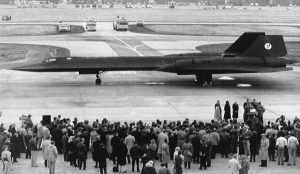
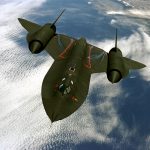 in accidents, but none of them to enemy action. The SR-71 has been given several nicknames, including Blackbird and Habu. It has held the world record for the fastest air-breathing manned aircraft since 1976. This record was previously held by the related Lockheed YF-12. On October 9, 1999, the Lockheed SR-71 took it’s final flight, and what a flight it was!! In it’s amazing final flight, the SR-71 Blackbird flew coast to coast in just one hour.
in accidents, but none of them to enemy action. The SR-71 has been given several nicknames, including Blackbird and Habu. It has held the world record for the fastest air-breathing manned aircraft since 1976. This record was previously held by the related Lockheed YF-12. On October 9, 1999, the Lockheed SR-71 took it’s final flight, and what a flight it was!! In it’s amazing final flight, the SR-71 Blackbird flew coast to coast in just one hour.
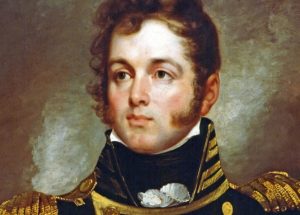
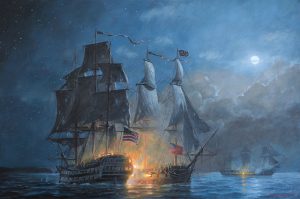 The War of 1812 was a conflict fought between the United States, the United Kingdom and their respective allies. British historians often view the War of 1812 as a minor theater of the Napoleonic Wars, but in the United States and Canada, it is seen as a war in its own right. When the War of 1812 broke out, the British immediately seized control of Lake Erie. They already had a small force of warships there…namely the HMS Queen Charlotte and the HMS Hunter. The HMS Lady Prevost was under construction and was put into service a few weeks after the war’s outbreak. These vessels were controlled by the Provincial Marine…a military transport service, and not part of the British navy. Still, they were there, and at the ready, when the call to war came.
The War of 1812 was a conflict fought between the United States, the United Kingdom and their respective allies. British historians often view the War of 1812 as a minor theater of the Napoleonic Wars, but in the United States and Canada, it is seen as a war in its own right. When the War of 1812 broke out, the British immediately seized control of Lake Erie. They already had a small force of warships there…namely the HMS Queen Charlotte and the HMS Hunter. The HMS Lady Prevost was under construction and was put into service a few weeks after the war’s outbreak. These vessels were controlled by the Provincial Marine…a military transport service, and not part of the British navy. Still, they were there, and at the ready, when the call to war came.
In stark contrast, the Americans lacked any presence to counter the British armed vessels, because the only American warship on Lake Erie, the USS Adams, was not ready for service at the start of the war. When the American army of Brigadier General William Hull abandoned its invasion of Canada, the USS Adams was pinned down in Detroit by the British batteries at Sandwich on the Canadian side of the Detroit River. That left the Americans in a less than favorable position to fight for domination on the lake, and yet they knew it was going to be a necessary battle in the war. In what was going to become the first unqualified defeat of a British naval squadron in history, United States Captain Oliver Hazard Perry lead a fleet of nine American ships to victory over a squadron of six British warships at the Battle of Lake Erie.
The British had taken the USS Adams when Detroit was surrendered, renaming her HMS Detroit. Together with the HMS Caledonia, which had been commandeered from the Canadian North West Company, the ships were boarded and captured near Fort Erie on October 9, 1812, by American sailors and soldiers led by Lieutenant Jesse Elliot. HMS Detroit ran aground on an island in the middle of the Niagara River and was set on fire to prevent recapture. HMS Caledonia was taken to the navy yard at Black Rock and commissioned into the United States Navy. Also present at Black Rock were the USS Somers, USS Ohio, and the USS Trippe, which had all been purchased by the United States Navy and were being converted into gunboats. The British held Fort Erie and the nearby batteries which dominated the Niagara River. All the United States vessels were pinned down and unable to leave Black Rock. The British Major General Isaac Brock used his control of the lake to defeat Hull’s army at the Siege of Detroit, by cutting the American supply lines and rapidly transferring himself and some reinforcements to Amherstburg from where they launched a successful landing on the American side of the Detroit River, but this could not be allowed to continue.
On September 10, 1813, the battle for Lake Erie began. The battle was closely contested for hours, and United States Captain Oliver Hazard Perry’s flagship USS Lawrence was reduced to a defenseless wreck. Perry then transferred to the Niagara and sailed directly into the British line, firing broadsides and forcing the British to 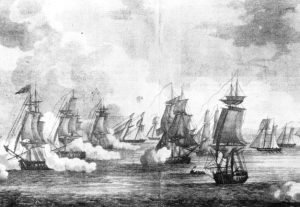
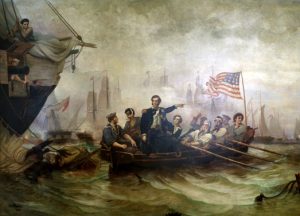 surrender. Perry had won a complete victory at the cost of 27 Americans killed and 96 wounded. British casualties were 40 dead and 94 wounded. After the battle, Perry sent a famous dispatch to United States General William Henry Harrison that read, “We have met the enemy, and they are ours.” The Battle of Lake Erie forced the British to abandon Detroit, thereby ensuring United States all future control over Lake Erie.
surrender. Perry had won a complete victory at the cost of 27 Americans killed and 96 wounded. British casualties were 40 dead and 94 wounded. After the battle, Perry sent a famous dispatch to United States General William Henry Harrison that read, “We have met the enemy, and they are ours.” The Battle of Lake Erie forced the British to abandon Detroit, thereby ensuring United States all future control over Lake Erie.
 In the 18th and 19th century, going swimming was not done in the same way as it was today. While it was considered ok to swim, the clothing was not considered appropriate, and so men and women were segregated during swimming. I don’t suppose going to the beach was as common, and so it problem might not have come up every day, but it came up enough to create a need for a “proper” way to accomplish an outing involving swimming. Enter the Bathing Machine. The bathing machine was basically a small room built on wheels that could be taken to the beach. People entered the machine while it was on the beach, wearing their street clothing. In the machine they changed into their bathing suit, although men were allowed to bathe nude until the 1860s. They then placed their street clothes into a raised compartment in the bathing machine, where they would remain safe and dry.
In the 18th and 19th century, going swimming was not done in the same way as it was today. While it was considered ok to swim, the clothing was not considered appropriate, and so men and women were segregated during swimming. I don’t suppose going to the beach was as common, and so it problem might not have come up every day, but it came up enough to create a need for a “proper” way to accomplish an outing involving swimming. Enter the Bathing Machine. The bathing machine was basically a small room built on wheels that could be taken to the beach. People entered the machine while it was on the beach, wearing their street clothing. In the machine they changed into their bathing suit, although men were allowed to bathe nude until the 1860s. They then placed their street clothes into a raised compartment in the bathing machine, where they would remain safe and dry.
I believe that all bathing machines had small windows, but one writer in the Manchester Guardian of May 26, 1906 considered them “ill-lighted” and wondered why bathing machines were not improved with a skylight. Once the person had changed, the machine would be wheeled or slid into the water. The most common type of these machines had large wide wheels and were pulled in and out of the surf by a horse or a pair of horses with a driver, but there were some that were pushed in and out of the water by human power. Some resorts had wooden rails into the water for the wheels to roll on, and a few had bathing machines pulled in and out by cables propelled by a steam engine.
Once the machine was in the water, the occupants stepped out from the sea side, and proceeded down steps into the water. Many of the machines had doors front and back, but those with only one door would be backed into the sea or need to be turned around. The most essential element of the machines, was that it blocked any view of the bather from the shore. Some of the more luxurious machines were equipped with a canvas tent lowered from the seaside door, sometimes capable of being lowered to the water, giving the bather greater privacy. Bathing machines would often be equipped with a small flag which could be raised by the bather as a signal to the driver that they were ready to return to shore. Some resorts even employed a dipper, a strong 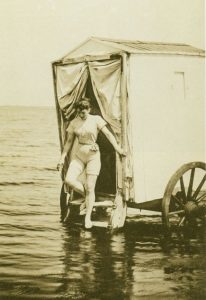 person of the same sex who would assist the bather in and out of the sea. Some dippers were said to push bathers into the water, then yank them out, considered part of the experience. Wow!! I’m not sure I would like that much, but then, to me this whole process seems like it would make the idea of bathing a bit too much of an undertaking, not to mention the added cost to go swimming, because I don’t think anyone would operate a bathing machine for free.
person of the same sex who would assist the bather in and out of the sea. Some dippers were said to push bathers into the water, then yank them out, considered part of the experience. Wow!! I’m not sure I would like that much, but then, to me this whole process seems like it would make the idea of bathing a bit too much of an undertaking, not to mention the added cost to go swimming, because I don’t think anyone would operate a bathing machine for free.
Bathing machines were most commonly used in the United Kingdom and parts of the British Empire with a British population, but were also used in France, Germany, the United States, Mexico, and other nations. Legal segregation of bathing areas in Britain ended in 1901, and the bathing machine declined rapidly. By the start of the 1920s, bathing machines were almost extinct, even on beaches catering to an older clientele. For those of us who grew up in the modern era, this process would seem like a bit of insanity, but then that was simply a different time.
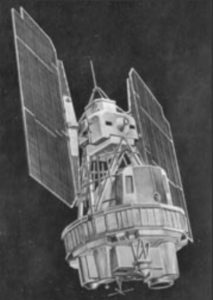 After the Soviet Union launched Sputnik, the world’s first satellite, on October 4, 1957, inspiring the United States to keep up, or fall behind in the Cold War, the United States launched it’s first satellite on January 31, 1958. That satellite was called Explorer 1, and followed the first two Soviet satellites the previous year…Sputnik 1 and 2. It was the beginning the Cold War Space Race between the two nations. Explorer 1 had mercury batteries that powered the high-power transmitter for 31 days and the low-power transmitter for 105 days. Explorer 1 stopped transmission of data on May 23, 1958 when its batteries died, but remained in orbit for more than 12 years. It reentered the atmosphere over the Pacific Ocean on March 31, 1970 after more than 58,000 orbits. The Explorer 1 payload consisted of the Iowa Cosmic Ray Instrument. It was without a tape data recorder, which was not modified in time to make it onto the spacecraft. The real-time data received on the ground was therefore very sparse and puzzling showing normal counting rates and no counts at all. I’m not sure what the counting was all about, so I guess I’m more confused than the scientists were. The later Explorer 3 mission, which included a tape data recorder in the payload, provided the additional data for confirmation of the earlier Explorer 1 data.
After the Soviet Union launched Sputnik, the world’s first satellite, on October 4, 1957, inspiring the United States to keep up, or fall behind in the Cold War, the United States launched it’s first satellite on January 31, 1958. That satellite was called Explorer 1, and followed the first two Soviet satellites the previous year…Sputnik 1 and 2. It was the beginning the Cold War Space Race between the two nations. Explorer 1 had mercury batteries that powered the high-power transmitter for 31 days and the low-power transmitter for 105 days. Explorer 1 stopped transmission of data on May 23, 1958 when its batteries died, but remained in orbit for more than 12 years. It reentered the atmosphere over the Pacific Ocean on March 31, 1970 after more than 58,000 orbits. The Explorer 1 payload consisted of the Iowa Cosmic Ray Instrument. It was without a tape data recorder, which was not modified in time to make it onto the spacecraft. The real-time data received on the ground was therefore very sparse and puzzling showing normal counting rates and no counts at all. I’m not sure what the counting was all about, so I guess I’m more confused than the scientists were. The later Explorer 3 mission, which included a tape data recorder in the payload, provided the additional data for confirmation of the earlier Explorer 1 data.
Landsat 1, which was originally named “Earth Resources Technology Satellite 1”, was the first satellite in the United States’ Landsat program. It was the first satellite that was launched with the sole purpose of studying and monitoring the planet. Landsat 1 was a modified version of the Nimbus 4 meteorological satellite and was launched on July 23, 1972 by a Delta 900 rocket from Vandenberg Air Force Base in California. Its orbit was near-polar and it served as a stabilized, Earth-oriented platform for obtaining information on agricultural and forestry resources, geology and mineral resources, hydrology and water resources, geography, cartography, environmental pollution, oceanography and marine resources, and meteorological phenomena. The spacecraft was placed in a sun-synchronous orbit, with an altitude between 564 and 569 miles. The spacecraft was placed in an orbit with an inclination of 99 degrees which orbited the Earth every 103 minutes. The project was renamed to Landsat in 1975.
Landsat 1 had two sensors to achieve its primary objectives…the return beam Vidicon (RBV) and the multispectral scanner (MSS). The RBV was manufactured by the Radio Corporation of America (RCA). The RBV obtained visible light and near infrared photographic images of Earth. It was considered the primary sensor. The MSS sensor manufactured by Hughes Aircraft Company was considered an experimental and secondary sensor, until scientists reviewed the data that was beamed back to Earth. After the data was reviewed, the MSS 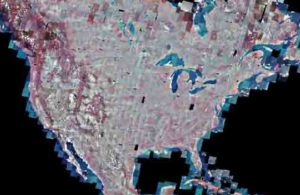 was considered the primary sensor. The MSS was a four-channel scanner that obtained radiometric images of Earth. From launch until 1974, Landsat 1 transmitted over 100,000 images, which covered more than 75% of the Earth’s surface. The RBV only took 1690 images. In 1976, Landsat 1 discovered a tiny uninhabited island 12 miles off the eastern coast of Canada. This island was named Landsat Island after the satellite. The MSS provided more than 300,000 images over the lifespan of the satellite. NASA oversaw 300 researchers that evaluated the data that Landsat 1 transmitted back to Earth. The Landsat 1 satellite sent data back to earth from its orbit until January of 1978 when its tape recorders malfunctioned. After that, it was taken out of service.
was considered the primary sensor. The MSS was a four-channel scanner that obtained radiometric images of Earth. From launch until 1974, Landsat 1 transmitted over 100,000 images, which covered more than 75% of the Earth’s surface. The RBV only took 1690 images. In 1976, Landsat 1 discovered a tiny uninhabited island 12 miles off the eastern coast of Canada. This island was named Landsat Island after the satellite. The MSS provided more than 300,000 images over the lifespan of the satellite. NASA oversaw 300 researchers that evaluated the data that Landsat 1 transmitted back to Earth. The Landsat 1 satellite sent data back to earth from its orbit until January of 1978 when its tape recorders malfunctioned. After that, it was taken out of service.
 Most people would agree that the prospect of taking a nation into war is a scary one at best…especially for its citizens. In 1916, the world was in the middle of World War I. Isolationism had been the order of the day, as the United States tried to stay out of this war, but by the summer of 1916, with the Great War raging in Europe, and with the United States and other neutral ships threatened by German submarine aggression, it had become clear to many in the United States that their country could no longer stand on the sidelines. With that in mind, some of the leading business figures in San Francisco planned a parade in honor of American military preparedness. The day was dubbed Preparedness Day, and with the isolationist, anti-war, and anti-preparedness feeling that still ran high among a significant population of the city…and the country, not only among such radical organizations as International Workers of the World (the so-called “Wobblies”) but among mainstream labor leaders. These opponents of the Preparedness Day event undoubtedly shared the view voiced publicly by one critic, former U.S. Secretary of State William Jennings Bryan, who claimed that the organizers, San Francisco’s financiers and factory owners, were acting in pure self-interest, as they clearly stood to benefit from an increased production of munitions. At the same time, with the rise of Bolshevism and labor unrest, San Francisco’s business community was justifiably nervous. The Chamber of Commerce organized a Law and Order Committee, despite the diminishing influence and political clout of local labor organizations. Radical labor was a small but vociferous minority which few took seriously. Nevertheless, it became obvious that violence was imminent.
Most people would agree that the prospect of taking a nation into war is a scary one at best…especially for its citizens. In 1916, the world was in the middle of World War I. Isolationism had been the order of the day, as the United States tried to stay out of this war, but by the summer of 1916, with the Great War raging in Europe, and with the United States and other neutral ships threatened by German submarine aggression, it had become clear to many in the United States that their country could no longer stand on the sidelines. With that in mind, some of the leading business figures in San Francisco planned a parade in honor of American military preparedness. The day was dubbed Preparedness Day, and with the isolationist, anti-war, and anti-preparedness feeling that still ran high among a significant population of the city…and the country, not only among such radical organizations as International Workers of the World (the so-called “Wobblies”) but among mainstream labor leaders. These opponents of the Preparedness Day event undoubtedly shared the view voiced publicly by one critic, former U.S. Secretary of State William Jennings Bryan, who claimed that the organizers, San Francisco’s financiers and factory owners, were acting in pure self-interest, as they clearly stood to benefit from an increased production of munitions. At the same time, with the rise of Bolshevism and labor unrest, San Francisco’s business community was justifiably nervous. The Chamber of Commerce organized a Law and Order Committee, despite the diminishing influence and political clout of local labor organizations. Radical labor was a small but vociferous minority which few took seriously. Nevertheless, it became obvious that violence was imminent.
A radical pamphlet of mid-July read in part, “We are going to use a little direct action on the 22nd to show that militarism can’t be forced on us and our children without a violent protest.” It was in this environment that the Preparedness Parade found itself on July 22, 1916. In spite of that, the 3½ hour long procession of some 51,329 marchers, including 52 bands and 2,134 organizations, comprising military, civic, judicial, state and municipal divisions as well as newspaper, telephone, telegraph and streetcar unions, went ahead as planned. At 2:06pm, about a half hour after the parade began, a bomb concealed in a suitcase exploded on the west side of Steuart Street, just south of Market Street, near the Ferry Building. Ten bystanders were killed by the explosion, and 40 more were wounded, in what became the worst terrorist act in San Francisco history. The city and the nation were outraged, and they declared that justice would be served.
Two radical labor leaders, Thomas Mooney and Warren K Billings, were quickly arrested and tried for the  attack. In the trial that followed, the two men were convicted, despite widespread belief that they had been framed by the prosecution. Mooney was sentenced to death and Billings to life in prison. After evidence surfaced as to the corrupt nature of the prosecution, President Woodrow Wilson called on California Governor William Stephens to look further into the case. Two weeks before Mooney’s scheduled execution, Stephens commuted his sentence to life imprisonment, the same punishment Billings had received. Investigation into the case continued over the next two decades. By 1939, evidence of perjury and false testimony at the trial had so mounted that Governor Culbert Olson pardoned both men, and the true identity of the Preparedness Day bomber, or bombers, remains forever unknown.
attack. In the trial that followed, the two men were convicted, despite widespread belief that they had been framed by the prosecution. Mooney was sentenced to death and Billings to life in prison. After evidence surfaced as to the corrupt nature of the prosecution, President Woodrow Wilson called on California Governor William Stephens to look further into the case. Two weeks before Mooney’s scheduled execution, Stephens commuted his sentence to life imprisonment, the same punishment Billings had received. Investigation into the case continued over the next two decades. By 1939, evidence of perjury and false testimony at the trial had so mounted that Governor Culbert Olson pardoned both men, and the true identity of the Preparedness Day bomber, or bombers, remains forever unknown.
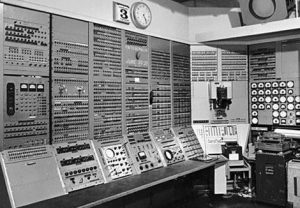 These days, being connected to the internet is commonplace. We connect from our computer, laptop, tablet, and even our phone. Many occupations, including the one I am in could not really function without the internet. When the computers go down, we are shut down too. For most of us, the internet is so much a part of our lives, that we simply cannot imagine life without it. Nevertheless, the reality is that until quite recently, there was no internet. I know people who think that might have been a better time, but I disagree. In fact, I think the people who say they think that, really have no idea just how bad that would be, and if they tried it once, they would change their minds quickly. People don’t realize how many things depend on the internet.
These days, being connected to the internet is commonplace. We connect from our computer, laptop, tablet, and even our phone. Many occupations, including the one I am in could not really function without the internet. When the computers go down, we are shut down too. For most of us, the internet is so much a part of our lives, that we simply cannot imagine life without it. Nevertheless, the reality is that until quite recently, there was no internet. I know people who think that might have been a better time, but I disagree. In fact, I think the people who say they think that, really have no idea just how bad that would be, and if they tried it once, they would change their minds quickly. People don’t realize how many things depend on the internet.
The first real idea of information available at our fingertips began to form on October 4, 1957, when the Soviet Union launched the world’s first manmade satellite into orbit. Known as Sputnik, the satellite did not do much. It tumbled aimlessly around in outer space, sending blips and bleeps from its radio transmitters as it circled the Earth. Nevertheless, to many Americans, the one foot diameter Sputnik was proof of something alarming. Up to this point, scientists and engineers in the United States had been designing bigger cars and better television sets, but the Soviets had been focusing on…less frivolous things, and they were going to win the Cold War because of it. Americans saw that information could eventually be transmitted back to the Soviets concerning American military and government secrets. It was the dawning of the age of spy satellites.
Sputnik’s launch, brought about the era of science and technology in America. In an effort to keep up, schools began teaching subjects like chemistry, physics and calculus. The government gave grants to corporations, who invested them in scientific research and development. The federal government formed new agencies, such as the National Aeronautics and Space Administration (NASA) and the Department of Defense’s Advanced Research Projects Agency (ARPA), to develop space-age technologies such as rockets, weapons and computers. Of course, the computer didn’t do nearly as much as it does these days, and it was the size of a small house. In 1962, a scientist from M.I.T. and ARPA named J.C.R. Licklider proposed a solution to this problem. His proposal 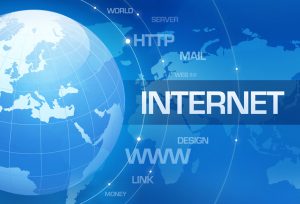 was a “galactic network” of computers that could talk to one another. Such a network would enable government leaders to communicate even if the Soviets destroyed the telephone system. Then came “packet switching.” Packet switching breaks data down into blocks, or packets, before sending it to its destination. That way, each packet can take its own route from place to place. Without packet switching, the government’s computer network, which is now known as the ARPAnet, would have been just as vulnerable to enemy attacks as the phone system. At least now computers did more, but they were still big.
was a “galactic network” of computers that could talk to one another. Such a network would enable government leaders to communicate even if the Soviets destroyed the telephone system. Then came “packet switching.” Packet switching breaks data down into blocks, or packets, before sending it to its destination. That way, each packet can take its own route from place to place. Without packet switching, the government’s computer network, which is now known as the ARPAnet, would have been just as vulnerable to enemy attacks as the phone system. At least now computers did more, but they were still big.
In 1969, ARPAnet delivered its first message. A “node-to-node” communication from one computer located in a research lab at UCLA, to the second located at Stanford. The message “LOGIN” was short and simple, and it crashed the ARPA network. Wow!! Things really are different today. The Stanford computer only received the note’s first two letters. By the end of 1969, just four computers were connected to the Arpanet. During the 1970s the network grew steadily. In 1971, it added the University of Hawaii’s ALOHAnet, and two years later it added networks at London’s University College and the Royal Radar Establishment in Norway. As packet-switched computer networks multiplied, it became more difficult for them to integrate into a single worldwide “Internet.” By the end of the 1970s, a computer scientist named Vinton Cerf had begun to solve this problem by developing a way for all of the computers on all of the world’s mini-networks to communicate with one another. He called his invention “Transmission Control Protocol,” or TCP. Later, he added an additional protocol, known as “Internet Protocol.” The acronym we use to refer to these today is TCP/IP. One writer describes Cerf’s protocol as “the ‘handshake’ that introduces distant and different computers to each other in a virtual space.”
Cerf’s protocol transformed the Internet into a worldwide network. Throughout the 1980s, researchers and scientists used it to send files and data from one computer to another. In 1991 the Internet changed again. That year, a computer programmer in Switzerland named Tim Berners-Lee introduced the World Wide Web…an Internet that was not simply a way to send files from one place to another, but was itself a “web” of information that anyone on the Internet could retrieve. Berners-Lee created the Internet that we know and use today. Since then, the Internet has changed in many ways, and will likely continue to change as time goes on. 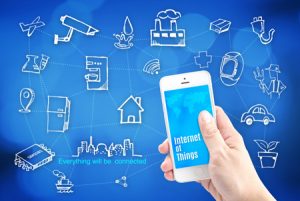 In 1992, a group of students and researchers at the University of Illinois developed a browser that they called Mosaic, later known as Netscape. Mosaic offered a user-friendly way to search the Web. It allowed users to see words and pictures on the same page for the first time and to navigate using scrollbars and clickable links. Then Congress decided that the Web could be used for commercial purposes. Companies developed websites of their own, and e-commerce entrepreneurs began to use the Internet to sell goods directly to customers. These days, social networking sites like Facebook have become a popular way for people of all ages, including me, to stay connected. Today, almost one-third of the world’s 6.8 billion people use the Internet regularly.
In 1992, a group of students and researchers at the University of Illinois developed a browser that they called Mosaic, later known as Netscape. Mosaic offered a user-friendly way to search the Web. It allowed users to see words and pictures on the same page for the first time and to navigate using scrollbars and clickable links. Then Congress decided that the Web could be used for commercial purposes. Companies developed websites of their own, and e-commerce entrepreneurs began to use the Internet to sell goods directly to customers. These days, social networking sites like Facebook have become a popular way for people of all ages, including me, to stay connected. Today, almost one-third of the world’s 6.8 billion people use the Internet regularly.
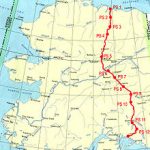
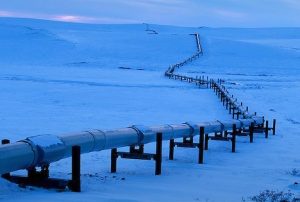 Dependency on foreign oil has long been a problem for the United States, keeping us always at the mercy of foreign oil companies. When we are dependent on foreign oil, we are subject to their prices and their shortages, or their refusal to sell to us. This nation has always needed to be dependent on our own production of oil, and as an oil rich nation, there is no reason for us to look elsewhere for our oil supply. Of course, the environmentalists would disagree with me, and I don’t want oil spills any more than anyone else does. Still, foreign nations have us at a disadvantage, not to mention that oil production in the United States would provide a lot jobs in the United States.
Dependency on foreign oil has long been a problem for the United States, keeping us always at the mercy of foreign oil companies. When we are dependent on foreign oil, we are subject to their prices and their shortages, or their refusal to sell to us. This nation has always needed to be dependent on our own production of oil, and as an oil rich nation, there is no reason for us to look elsewhere for our oil supply. Of course, the environmentalists would disagree with me, and I don’t want oil spills any more than anyone else does. Still, foreign nations have us at a disadvantage, not to mention that oil production in the United States would provide a lot jobs in the United States.
I’m not the only one who thinks this way either. In 1968, a massive oil field was discovered on the north coast of Alaska near Prudhoe Bay, which is north of the Arctic Circle, but the ice-packed waters of the Beaufort Sea are inaccessible to oil tankers. In 1972, the Department of the Interior authorized drilling there, and after the Arab oil embargo of 1973 plans moved quickly to begin construction of a pipeline. The Alyeska Pipeline Service Company was formed by a consortium of major oil companies, and in 1974 construction began. The steel pipeline is 48 inches in diameter, and it winds through 800 miles of Alaskan wilderness, crossing three Arctic mountain ranges and hundreds of rivers and streams. Environmentalists fought to prevent its construction, saying it would destroy a pristine ecosystem, but they were ultimately overruled by Congress, who saw it as a way of lessening America’s dependence on foreign oil. The trans-Alaska pipeline was the world’s largest privately funded construction project to that date, costing $8 billion and taking three years to build. The conservation groups argued that the pipeline would destroy caribou habitats in the Arctic, melt the fragile permafrost (which is permanently frozen subsoil), along its route, and pollute the salmon-rich waters of the Prince William Sound at Valdez. Under pressure, Alyeska agreed to extensive environmental precautions, including building 50% of the pipeline above the ground to protect the permafrost from the naturally heated crude oil and to permit passage of caribou underneath.
On June 20, 1977, with the flip of a switch in Prudhoe Bay, crude oil from the nation’s largest oil field began flowing south, down the trans-Alaska pipeline to the ice-free port of Valdez, Alaska. It wasn’t without its glitches, however. Power supply problems, a cracked section of pipe, faulty welds, and an unsuccessful dynamite attack on the pipeline outside of Fairbanks delayed the arrival of oil at Valdez for several weeks. Finally, in August, the first oil tanker left Valdez en route to the lower 48 states. The trans-Alaska pipeline was great for the Alaskan economy. Today, about 800,000 barrels move through the pipeline each day. Altogether, the pipeline has carried more than 14 billion barrels of oil in its lifetime. For its first decade of existence, the pipeline was quietly applauded as an environmental success, much to the chagrin of the environmentalists. Caribou populations in the vicinity of the pipeline actually grew, partly because many of the grizzly bears and wolves were scared off by the pipeline work, and the permafrost remained intact. The only major oil spill on land occurred when an unknown saboteur blew a hole in the pipe near Fairbanks, and 550,000 gallons of oil spilled onto the ground. Then, on March 24, 1989, the worst fears of environmentalists were realized when the Exxon Valdez ran aground in the Prince William Sound after filling up at the port of Valdez. Ten million gallons of oil were dumped into the water, devastating hundreds of miles of coastline. In the 1990s, the Alaskan oil enterprise drew further controversy when the Alyeska Pipeline Service Company attempted to cover up electrical and mechanical problems in the aging pipeline.
In 2001, President George W. Bush proposed opening a portion of the 19 million acre Arctic National Wildlife 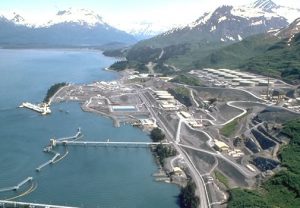
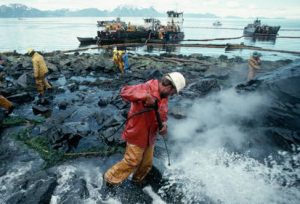 Refuge, east of Prudhoe Bay, to oil drilling. The environmental groups immediately opposed the proposal and it was initially defeated. Then, in 2006, the Senate voted 51-49 in favor of a budget resolution that included billions for Arctic drilling. Environmental groups are still fighting the legislation. I think, drilling at home is the best way to protect American jobs, and our economy, and as we all know, it could certainly use a serious boost right now.
Refuge, east of Prudhoe Bay, to oil drilling. The environmental groups immediately opposed the proposal and it was initially defeated. Then, in 2006, the Senate voted 51-49 in favor of a budget resolution that included billions for Arctic drilling. Environmental groups are still fighting the legislation. I think, drilling at home is the best way to protect American jobs, and our economy, and as we all know, it could certainly use a serious boost right now.
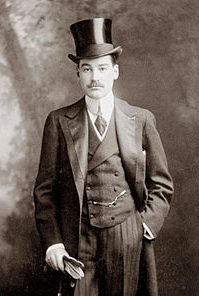 During World War I, the Germans had taken a hard line concerning the waters around England. It was called unrestricted submarine warfare, and it meant that German submarines would attack any ship found in the war zone, which, in this case, was the area around the British Isles…no matter what kind of ship it was, and even if it was from a neutral country. Of course, this was not going to fly, and since Germany was afraid of the United States, they finally agreed to only go after military ships. Nevertheless, mistakes can be made, and that is what happened on May 7, 1915, when a German U-boat torpedoed and sank the RMS Lusitania, a British ocean liner en route from New York to Liverpool, England. Of the more than 1,900 passengers and crew members on board, more than 1,100 perished, including more than 120 Americans. A warning had been placed in several New York newspapers in early May 1915, by the German Embassy in Washington, DC, stating that Americans traveling on British or Allied ships in war zones did so at their own risk. The announcement was placed on the same page as an advertisement of the imminent sailing of the Lusitania liner from New York back to Liverpool. Still this did not stop the sailing of the Lusitania, because the captain of the Lusitania ignored the British Admiralty’s recommendations, and at 2:12 pm on May 7 the 32,000-ton ship was hit by an exploding torpedo on its starboard side. The torpedo blast was followed by a larger explosion, probably of the ship’s boilers, and the ship sank off the south coast of Ireland in less than 20 minutes.
During World War I, the Germans had taken a hard line concerning the waters around England. It was called unrestricted submarine warfare, and it meant that German submarines would attack any ship found in the war zone, which, in this case, was the area around the British Isles…no matter what kind of ship it was, and even if it was from a neutral country. Of course, this was not going to fly, and since Germany was afraid of the United States, they finally agreed to only go after military ships. Nevertheless, mistakes can be made, and that is what happened on May 7, 1915, when a German U-boat torpedoed and sank the RMS Lusitania, a British ocean liner en route from New York to Liverpool, England. Of the more than 1,900 passengers and crew members on board, more than 1,100 perished, including more than 120 Americans. A warning had been placed in several New York newspapers in early May 1915, by the German Embassy in Washington, DC, stating that Americans traveling on British or Allied ships in war zones did so at their own risk. The announcement was placed on the same page as an advertisement of the imminent sailing of the Lusitania liner from New York back to Liverpool. Still this did not stop the sailing of the Lusitania, because the captain of the Lusitania ignored the British Admiralty’s recommendations, and at 2:12 pm on May 7 the 32,000-ton ship was hit by an exploding torpedo on its starboard side. The torpedo blast was followed by a larger explosion, probably of the ship’s boilers, and the ship sank off the south coast of Ireland in less than 20 minutes.
While the sinking of the Lusitania was a horrible tragedy, there were heroics too. One such hero was Alfred Gwynne Vanderbilt, Sr. Vanderbilt was an extremely wealthy American businessman and sportsman, and a member of the famous Vanderbilt family, but on this trip, he was so much more than that. On May 1, 1915, Alfred Vanderbilt boarded the RMS Lusitania bound for Liverpool as a first class passenger. Vanderbilt was on a business trip. He was traveling with only his valet, Ronald Denyer. His family stayed at home in New York. On May 7, off the coast of County Cork, Ireland, German U-boat, U-20 torpedoed the ship, triggering a secondary explosion that sank the giant ocean liner within 18 minutes. Vanderbilt and Denyer immediately went into action, helping others into lifeboats, and then Vanderbilt gave his lifejacket to save a female passenger. Vanderbilt had promised the young mother of a small baby that he would locate an extra life vest for her. Failing to do so, he offered her his own life vest, which he proceeded to tie on to her himself, because she was holding her infant child in her arms at the time.
Vanderbilt had to know he was sealing his own fate, since he could not swim and he knew there were no other life vests or lifeboats available. They were in waters where no outside help was likely to be coming. Still, he 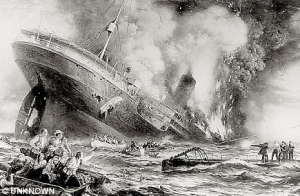 gave his life for hers and that of her child. Because of his fame, several people on the Lusitania who survived the tragedy were observing him while events unfolded at the time, and so they took note of his actions. I suppose that had he not been famous, people would not have known who he was to tell the story. Vanderbilt and Denyer were among the 1198 passengers who did not survive the incident. His body was never recovered. Probably the most ironic fact is that three years earlier Vanderbilt had made a last-minute decision not to return to the US on RMS Titanic. In fact, his decision not to travel was made so late that some newspaper accounts listed him as a casualty after that sinking too. He would not be so fortunate when he chose to travel on Lusitania.
gave his life for hers and that of her child. Because of his fame, several people on the Lusitania who survived the tragedy were observing him while events unfolded at the time, and so they took note of his actions. I suppose that had he not been famous, people would not have known who he was to tell the story. Vanderbilt and Denyer were among the 1198 passengers who did not survive the incident. His body was never recovered. Probably the most ironic fact is that three years earlier Vanderbilt had made a last-minute decision not to return to the US on RMS Titanic. In fact, his decision not to travel was made so late that some newspaper accounts listed him as a casualty after that sinking too. He would not be so fortunate when he chose to travel on Lusitania.
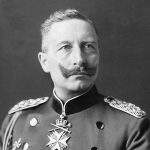 While Germany was willing to go to war, they had, nevertheless, a healthy fear of the United States. During World War I, Germany introduced unrestricted submarine warfare. It was early 1915, and Germany decided that the area around the British Isles was a war zone, and all merchant ships, including those from neutral countries, would be attacked by the German navy. That action set in motion a series of attacks on merchant ships, that finally led to the sinking of the British passenger ship, RMS Lusitania on May 7, 1915. It was at this point that President Woodrow Wilson decided that it was time to pressure the German government to curb their naval actions. Because the German government didn’t want to antagonize the United States, they agreed to put restrictions on the submarine policy going forward, which angered many of their naval leaders, including the naval commander in chief, Admiral Alfred von Tirpitz, who showed his frustration by resigning in March 1916.
While Germany was willing to go to war, they had, nevertheless, a healthy fear of the United States. During World War I, Germany introduced unrestricted submarine warfare. It was early 1915, and Germany decided that the area around the British Isles was a war zone, and all merchant ships, including those from neutral countries, would be attacked by the German navy. That action set in motion a series of attacks on merchant ships, that finally led to the sinking of the British passenger ship, RMS Lusitania on May 7, 1915. It was at this point that President Woodrow Wilson decided that it was time to pressure the German government to curb their naval actions. Because the German government didn’t want to antagonize the United States, they agreed to put restrictions on the submarine policy going forward, which angered many of their naval leaders, including the naval commander in chief, Admiral Alfred von Tirpitz, who showed his frustration by resigning in March 1916.
On March 24, 1916, soon after Tirpitz’s resignation, a German U-boat submarine attacked the French passenger steamer Sussex, in the English Channel, thinking it was a British ship equipped to lay explosive mines. It was apparently an honest mistake, and the ship did not sink. Still, 50 people were killed and many  more injured, including several Americans. On April 19, in an address to the United States Congress, President Wilson took a firm stance, stating that unless the Imperial German Government agreed to immediately abandon its present methods of warfare against passenger and freight carrying vessels the United States would have no choice but to sever diplomatic relations with the Government of the German Empire altogether.
more injured, including several Americans. On April 19, in an address to the United States Congress, President Wilson took a firm stance, stating that unless the Imperial German Government agreed to immediately abandon its present methods of warfare against passenger and freight carrying vessels the United States would have no choice but to sever diplomatic relations with the Government of the German Empire altogether.
After Wilson’s speech, the US ambassador to Germany, James W. Gerard, spoke directly to Kaiser Wilhelm on May 1 at the German army headquarters at Charleville in eastern France. After Gerard protested the continued German submarine attacks on merchant ships, the Kaiser in turn denounced the American government’s compliance with the Allied naval blockade of Germany, in place since late 1914. Nevertheless, Germany could not risk American entry into the war against them, so when Gerard urged the Kaiser to provide assurances of a change in the submarine policy, the Kaiser agreed.
On May 6, the German government signed the so-called Sussex Pledge, promising to stop the indiscriminate sinking of non-military ships. According to the pledge, merchant ships would be searched, and sunk only if they  were found to be carrying contraband materials. Furthermore, no ship would be sunk before safe passage had been provided for the ship’s crew and its passengers. Gerard was skeptical of the intentions of the Germans, and wrote in a letter to the United States State Department that “German leaders, forced by public opinion, and by the von Tirpitz and Conservative parties would take up ruthless submarine warfare again, possibly in the autumn, but at any rate about February or March, 1917.” Gerard was right, and on February 1, 1917, Germany announced the resumption of unrestricted submarine warfare. Two days later, Wilson announced a break in diplomatic relations with the German government, and on April 6, 1917, the United States formally entered World War I on the side of the Allies.
were found to be carrying contraband materials. Furthermore, no ship would be sunk before safe passage had been provided for the ship’s crew and its passengers. Gerard was skeptical of the intentions of the Germans, and wrote in a letter to the United States State Department that “German leaders, forced by public opinion, and by the von Tirpitz and Conservative parties would take up ruthless submarine warfare again, possibly in the autumn, but at any rate about February or March, 1917.” Gerard was right, and on February 1, 1917, Germany announced the resumption of unrestricted submarine warfare. Two days later, Wilson announced a break in diplomatic relations with the German government, and on April 6, 1917, the United States formally entered World War I on the side of the Allies.
 As Americans began to expand to the West, new territories had to be opened for settlement. Of course, this was not always met with approval from the Indian nations who were living there at the time. Nevertheless, the settling of this nation would not be stopped, and while it was handled wrong in many ways, it was inevitable. Nearly two million acres of land in Oklahoma Territory had been preciously deemed unsuitable for white settlement, and so were given to the Native Americans who had been previously removed from their traditional lands to allow for white settlement. The relocations began in 1817. By the 1880s, Indian Territory was home to a variety of tribes, including the Chickasaw, Choctaw, Cherokee, Creek, Cheyenne, Comanche, and Apache.
As Americans began to expand to the West, new territories had to be opened for settlement. Of course, this was not always met with approval from the Indian nations who were living there at the time. Nevertheless, the settling of this nation would not be stopped, and while it was handled wrong in many ways, it was inevitable. Nearly two million acres of land in Oklahoma Territory had been preciously deemed unsuitable for white settlement, and so were given to the Native Americans who had been previously removed from their traditional lands to allow for white settlement. The relocations began in 1817. By the 1880s, Indian Territory was home to a variety of tribes, including the Chickasaw, Choctaw, Cherokee, Creek, Cheyenne, Comanche, and Apache.
By the 1890s, with the improvements in agricultural and ranching techniques led some white Americans to realize that the Indian Territory land could be valuable, so they began to pressure the United States government to allow white settlement in the region. In 1889, President Benjamin Harrison agreed, making the first of a long series of authorizations that eventually removed most of Indian Territory from Indian control. To begin the process of white settlement, President Harrison chose to open a 1.9 million acre section of Indian Territory that the government had never assigned to any specific tribe. I suppose it was a way to ease into it without taking land from any specific tribe…initially anyway. However, subsequent openings of sections that  were designated to specific tribes were achieved primarily through the Dawes Severalty Act of 1887, which allowed whites to settle large swaths of land that had previously been designated to specific Indian tribes.
were designated to specific tribes were achieved primarily through the Dawes Severalty Act of 1887, which allowed whites to settle large swaths of land that had previously been designated to specific Indian tribes.
On March 3, 1889, Harrison announced the government would open the 1.9 million-acre tract of Indian Territory for settlement precisely at noon on April 22, 1889. Anyone could join the race for the land, but no one was supposed to jump the gun. With only seven weeks to prepare, the land-hungry Americans quickly began to gather around the borders of the irregular rectangle of territory. They were referred to as “Boomers,” and by the appointed day more than 50,000 hopefuls were living in tent cities on all four sides of the territory. At precisely high noon, thousands of would-be settlers make a mad dash into the newly opened Oklahoma Territory to claim cheap land. I can only imagine the chaos. The events that day at Fort Reno on the western border were typical of the entire process. At 11:50am, soldiers called for everyone to form a line. When the hands of the clock reached noon, the cannon of the fort boomed, and the soldiers signaled the settlers to start. With the crack of hundreds of whips, thousands of Boomers streamed into the territory in wagons, on horseback, and on foot. All told, from 50,000 to 60,000 settlers entered the territory that day. By nightfall, they had staked thousands of claims either on town lots or quarter section farm plots. Towns like Norman, Oklahoma City, Kingfisher, and Guthrie sprang into being almost overnight.
 An extraordinary display of both the pioneer spirit and the American lust for land, the first Oklahoma land rush was also plagued by greed and fraud. Cases involving “Sooners,” who were people who had entered the territory before the legal date and time overloaded courts for years to come. I’m sure that the Indians weren’t pleased either, and I would imagine that there was periodic trouble over the whole process too. The government attempted to improve the operations of subsequent runs by adding more controls, finally adopting a lottery system to designate claims. By 1905, white Americans owned most of the land in Indian Territory. Two years later, the area once known as Indian Territory entered the Union as a part of the new state of Oklahoma.
An extraordinary display of both the pioneer spirit and the American lust for land, the first Oklahoma land rush was also plagued by greed and fraud. Cases involving “Sooners,” who were people who had entered the territory before the legal date and time overloaded courts for years to come. I’m sure that the Indians weren’t pleased either, and I would imagine that there was periodic trouble over the whole process too. The government attempted to improve the operations of subsequent runs by adding more controls, finally adopting a lottery system to designate claims. By 1905, white Americans owned most of the land in Indian Territory. Two years later, the area once known as Indian Territory entered the Union as a part of the new state of Oklahoma.

